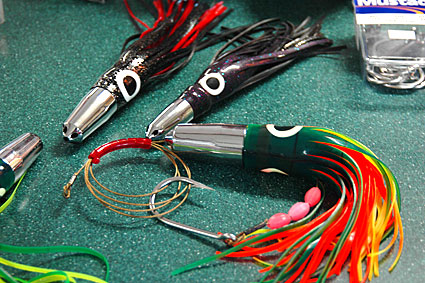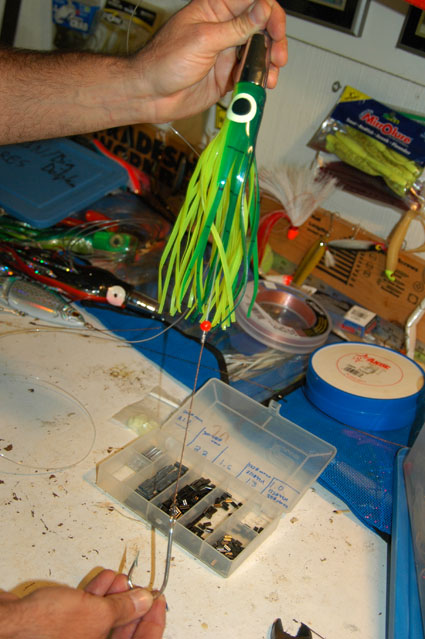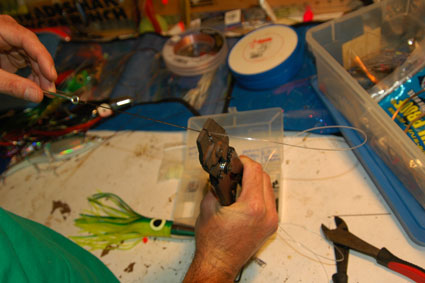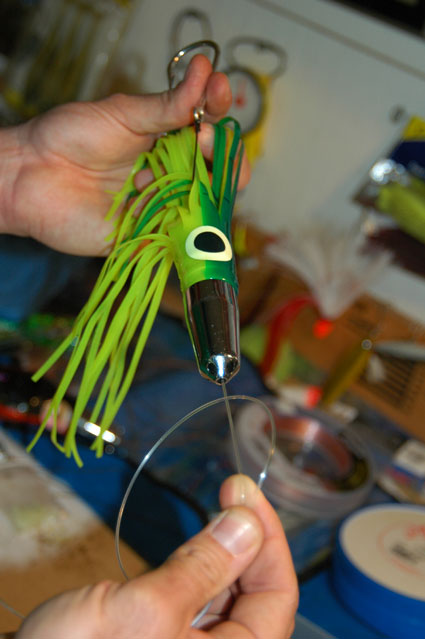April 04, 2020
By Jeff Weakley
Mixed leader for wahoo, tuna and more.

For offshore trolling, it's always hard deciding whether to run wire, monofilament or fluorocarbon. Wire is definitely an advantage if you're targeting wahoo or other toothy critters, but some days mono or fluoro seem to attract more bites from leader-shy species such as tuna and billfish.

One solution is to run both mono and wire, on the same lure. A connection between monofilament and singlestrand wire can be made with an Albright special knot. There are some drawbacks to singlestrand, however—it kinks and weakens. Cable is preferable for making up bluewater trolling lures. Here's one way to do it. Sean Rominger, of LMR Tackle in Ft. Lauderdale, turned me on to this technique, and I've converted many of my lures this season.
For the small chuggers, jets and feathers we commonly pull on 20- to 30-pound trolling gear (school dolphin, blackfin tuna, sailfish), 80-pound monofilament or fluorocarbon is good.
For 30- to 50-pound tackle (slammer dolphin, wahoo, yellowfin tuna), 125- or 130-pound mono leader is appropriate.
The simplest rigging method is knotting or crimping the leader to a hook, and adding plastic beads until the hook bend lies at the back of the skirt. To make the rigs more kingfish- and wahoo-proof:

Buy a spool of Duratest or other cable of equivalent diameter to your mono or fluoro leader, and the correct sleeves. For 80-pound fluoro: 175-pound Duratest and 1.0 mm double barrel sleeves. For 125- or 130-pound mono, 275-pound Duratest and 1.3 mm double barrel sleeves.
You'll also need offshore crimping pliers (the best ones have a side-cutter that handles heavy mono or cable), and spacing beads (plain old red “tourist” beads work fine).

Use one sleeve and crimp the cable to your hook, tightly (helps keep the hook from fouling). Crimp the cable so that the cut end is nearly flush with the end of the sleeve. Cable is nasty stuff—loose ends can pierce your skin when handling rigs.

Slide the terminal end of the mono or fluorocarbon into one side of a second sleeve, and the piece of cable into the other side. Draw up the cable, cut and crimp so the bend of the hook—but not the point--will be exposed behind the skirt. When compressing the sleeve, leave a little flare on the mono side, to resist cutting it.
For heavier applications, bump up the leader size accordingly, and use double crimps, if you like.

Now fish can't see the cable coming, but they'll know it's there when they bite!
